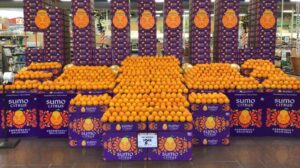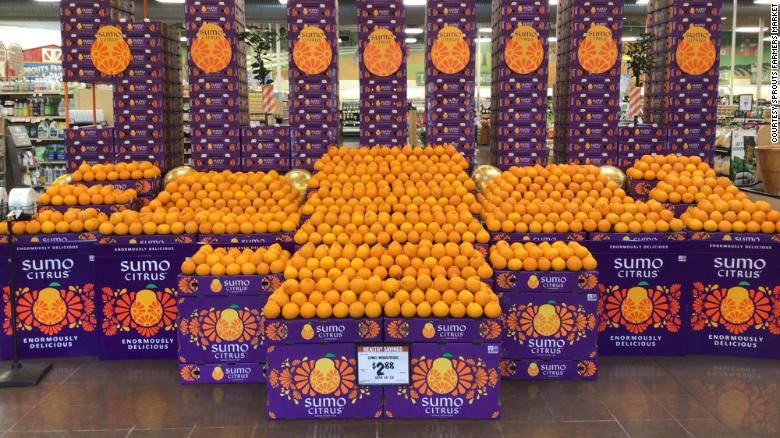
When Jerry Callahan had his first bite of a Sumo Citrus fruit about nine years ago, he knew he’d tried something special. “This is going to go crazy,” he thought.
As the group vice president of produce and floral at the grocery store chain Albertsons, Callahan is essentially a produce trend-spotter by trade — and he’s eaten a lot of fruit. But he described Sumo Citrus as unique. “The eating experience, there’s just nothing like it,” he said.
The fruit may appear unappealing at first: It looks like a small, wrinkly orange with a knob akin to the top knot worn by the Sumo wrestlers for which it’s named. But it’s actually a hybrid of navel oranges, pomelos and mandarins and tastes like an extra-sweet mandarin. It peels easily, thanks in part to that knobby handle, and doesn’t make your fingers too sticky.
AC Brands, the company behind Sumo Citrus, started selling its produce here (US) in 2011 and increased its crop over time. But as more hit stores, more sold. And then once production hit a critical mass, Callahan’s prediction started to come true.
I – Word Understanding
Cult following– admiration (for something) felt by a certain group of people/fans
Trend-spotter – a person who predicts about developing trends
Knob – a small rounded ornament or handle
Akin – similar
II – Have Your Say
1, Can you tell the differences (taste, appearance, price, availability, uses, etc) of the following citrus fruits?
a, Orange
b, Mandarin
c, Kiyomi
d, Pomelo
e, Ponkan
f, Mikan
g, Yuzu
h, Lemon
i, Dekopon
2, Accordingly, Sumo Citrus was originally developed by a farmer in Japan – a cross between a Kiyomi, mandari and pomelo. Can you describe other “especially bred/ crossbred” fruits in Japan?
3, What do you think about cross breeding and genetically modifying plants? Could this help with the issues of food shortage and climate change? What do you think are its negative aspects?
805 This little-known Japanese fruit now has a cult following


